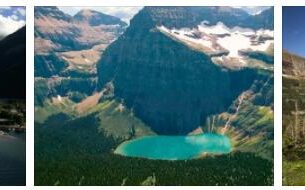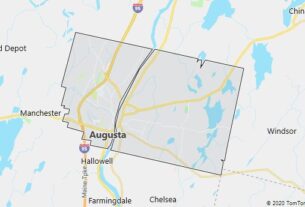The national parks form the largest nature reserve on earth, located on the mainland. You are in Northwest Canada or across borders in Southeast Alaska. Its particularly impressive landscapes include glaciers, high peaks such as the 5959 m high Mount Logan, as well as the largest ice field outside the polar regions.
National parks in the border area between Alaska and Canada: Facts
| Official title: | Kluane, Wrangell-Saint-Elias National Parks and Tatshenshini-Alsek Provincial Park |
| Natural monument: | Kluane National Park since 1979 with Wrangell-St. Elias National Park and Reserve World Heritage Site; Extension to Glacier Bay National Park 1992 and Tatshenshini-Alsek Wilderness (Canada) 1994; Total area: 98,391.21 km², cold temperate to continental climates at altitudes of 600 to 5950 m (Mount Logan); Bagley icefield, one of the largest non-polar ice fields in the world |
| Continent: | America |
| Country: | Canada and USA, Alaska (USA), Yukon Territory and British Columbia (Canada) |
| Location: | Southeast Alaska and Northwest Canada, see payhelpcenter |
| Appointment: | 1979, expanded in 1992 and 1994 |
| Meaning: | a particularly impressive landscape with glaciers and high peaks on both sides of the US-Canadian border and a habitat for caribou, grizzly bears and rare Dall sheep |
| Flora and fauna: | Vegetation up to 1110 m with mold spruce, balsam poplar, American quaking aspen, coastal forest of Alaska with western hemlock and sitka spruce; subalpine region up to 1400 m with pastures; alpine tundra (1600-2000 m) with lichens, dwarf birches as well as shrub and herbaceous layers with crowberries; 29 mammal species, including grizzly bears – the largest population on earth with around 600 animals -, elk, wolf, black bear, mountain goat, caribou, especially in Alaska: Canada otter, beaver, sea lions, walruses, American mink; 180 species of birds including black-throated grebe, whooper swan, red grouse, brewer’s blackfinch, snow goose and whimbrel |
White symphony of glaciers and mountain giants
The ice-covered peaks in the summit chain of the Wrangell-Saint Elias Mountains line up seemingly endless on the horizon. As if they were rivers made of ice, jagged glaciers meander down from the mightiest ice fields outside the polar zone. They pour directly into the sea bays from over 4,000 meters above sea level and feed numerous sediment-laden rivers that are full of rapids and find their way through pristine valleys inland. This natural paradise is dominated by Mount Logan, the second highest mountain in North America.
Across international borders, the Alaskan national parks Glacier Bay and Wrangell-Saint Elias as well as the Kluane National Park in the Yukon Territory and the Tatshenshini-Alsek Wilderness, which already extends into the province of British Columbia, together form the largest nature reserve in North America. Visitors stand in reverent amazement in front of this immensely large, unimaginably wild region, gazing spellbound at the seemingly unassailable composition of ice, water and stone. Only the edges of the park touch asphalt roads every now and then as a link to civilization.
Nowhere else can you experience the crunching and cracking of calving glaciers better than in Glacier Bay. A breathtaking sight are the chunks of ice, which – often the size of a house – tumble with a great roar from the steep walls into the ice-covered water. When Captain George Vancouver sailed past Glacier Bay at the end of the 18th century, a thick, impenetrable ice barrier closed the entrance. Around 200 years later, the glaciers have long since retired from Glacier Bay, and white excursion boats sail deep into the elongated bay so that you can watch whales passing by and sea lions gliding gracefully through the waves. Whales from southern latitudes spend the summer in the nutrient-rich water. Every photographer’s dream comes true when a humpback whale rises out of the water and when it re-submerges its tail fin majestically dips into the reflecting surface of the water. People, plants and animals have to adapt extremely in places where humid Pacific winds meet the mountains in the mountains near the coast and create the breeding ground for ice and snow, where glaciers and rocks dominate. Only a few people have dared to venture into this rugged wilderness, which today still cannot be crossed for hundreds of kilometers. Towards the end of the 19th century, the packhorse trail of the Jack Dalton, which follows a former Indian trail – which runs roughly parallel to today’s Haines Highway on the eastern edge of the Kluane National Park – was the only way far and wide.
A century later, the Dalton Post is gaining in importance again – not as a vital stopover, but as a starting point for recreational fun with thrills: On the move with kayaks and rubber dinghies, the Alsek and Tatshenshini white water rivers enable the only glacier-free crossing of the vast mountain region. But be careful, as there are some extremely turbulent rapids on the upper Alsek River. Most modern adventurers bypass the almost impregnable Turnback Canyon, the »Reversal Canyon«, as the trip can be done more safely on the Tatshenshini tributary. If you are drawn to the northwest of North America, urban dwellers are looking for a challenge that has largely been lost in everyday life. Getting along with the elements is probation enough.



